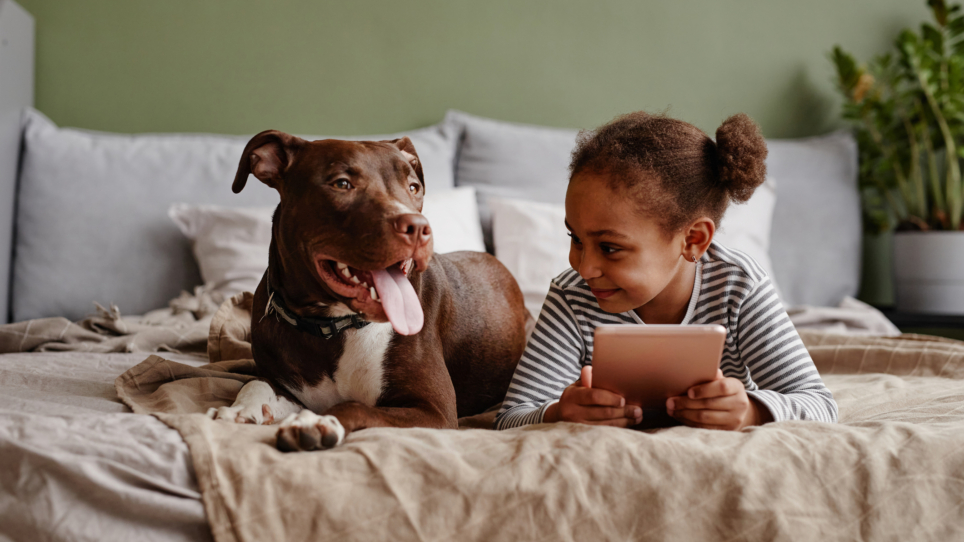Having a family dog can create lifelong memories. Whether you already have a dog before children or add a furry addition to the family after children come along, it’s important to manage the introduction carefully. Introducing furry family members and little humans is a special and exciting time, but it can also be overwhelming for you, the dog and the kids. This can be managed with planning, so that everyone feels happy and safe. Taking the time and making the effort to get the introductions right will help set your children and dog up to have a great relationship.
Body Language
First things first, get familiar with recognising your dog’s body language and what different expressions mean. Dogs mainly communicate with their body language and facial expressions, so when you know what to look for, you’re able to understand how they’re feeling and help them when they need you.


If your dog is feeling uncomfortable and it’s left unnoticed, your dog’s behaviour can escalate. As the adult, it’s your responsibility to ensure your dog doesn’t need to resort to defensive behaviour. This means that as soon as you see signs that your dog is feeling uncomfortable, stop the interaction with your children immediately.
Teaching your children about dog body language and expressions is a great way to help them understand how to interact with dogs and why they should never do certain things, such as pulling a dog’s tail or ear.
Give your dog space
Always ensure your dog has the choice of interacting with your kids or not. If your dog becomes overwhelmed during an interaction with your kids, they need an area where they can go to retreat and have a break.
As well as having a space to retreat to, having personal space is a must. It’s important to teach your children not to chase, run around, pick up, squeeze, poke, crawl, hug, lean or sit on dogs. These actions can cause behaviour that can escalate if left unnoticed. Times that are very important to give your dog personal space is when they’re eating, sleeping or in a crate.
The first meeting
When it’s time for your children and dog to meet, make sure your children sit calmly and your dog will usually come to investigate out of natural curiosity. Teach your children to speak softly and gently pat the dog on the shoulder, not on the top of their head or tail. Reward your dog for calm behaviour with a treat. This helps to reinforce calm behaviour around children as well as helps your dog to associate children with something positive. After a short interaction, take the focus off your dog by giving your children another activity. This way your dog can get to know your children at a pace they are comfortable with. Remember, never leave your children and dog together unsupervised.
Teaching children to interact with dogs in a respectful way will help them create a bond of mutual trust with dogs. Dogs can be apprehensive around kids and vice versa, so it’s important to teach both your dog and your kids how to be around each other.
